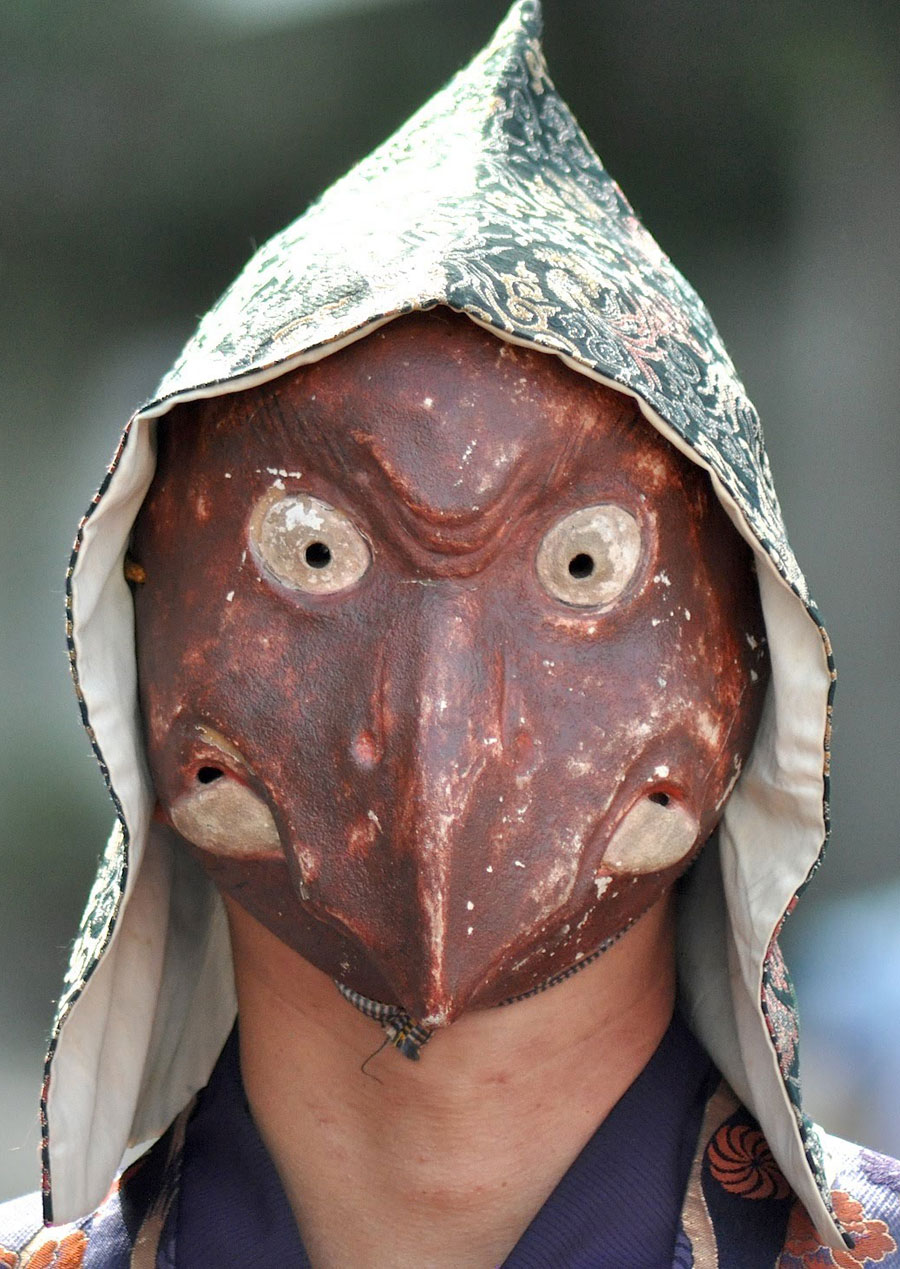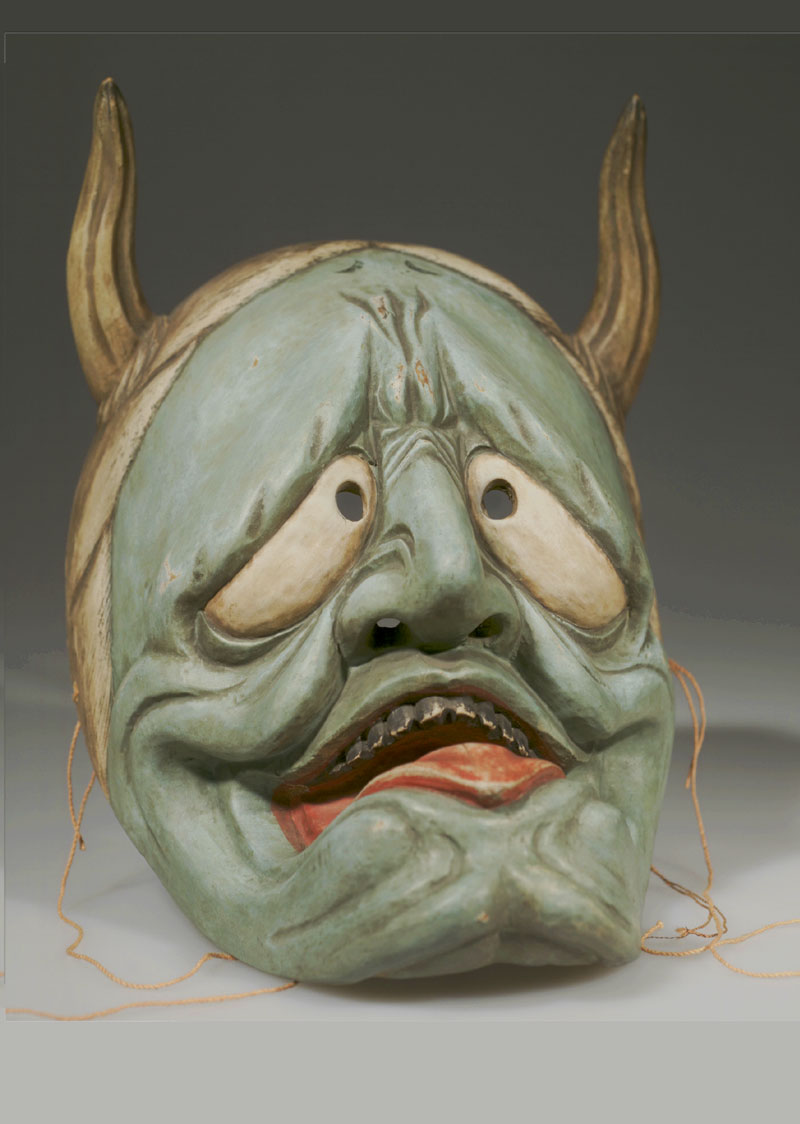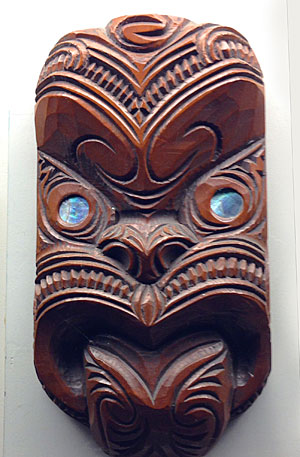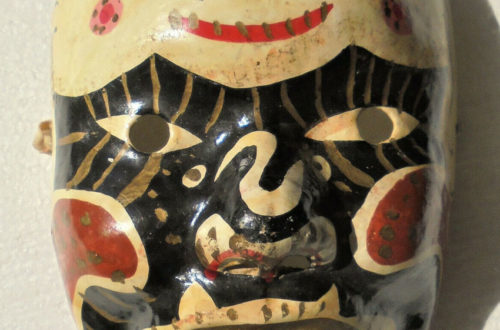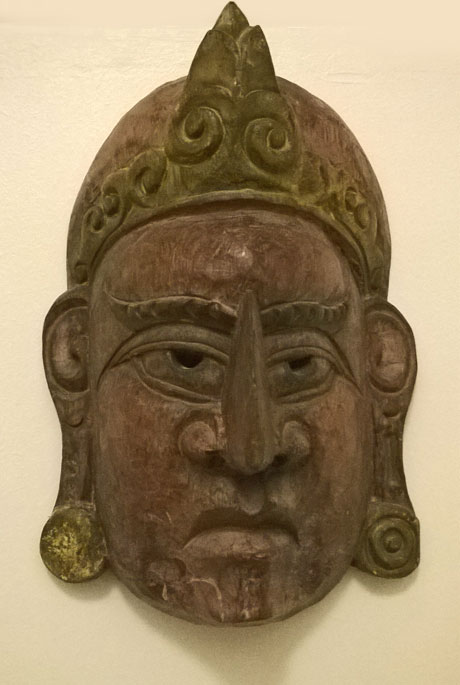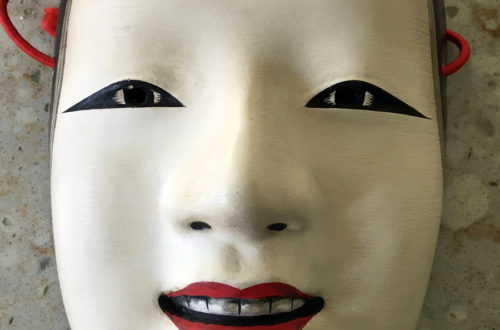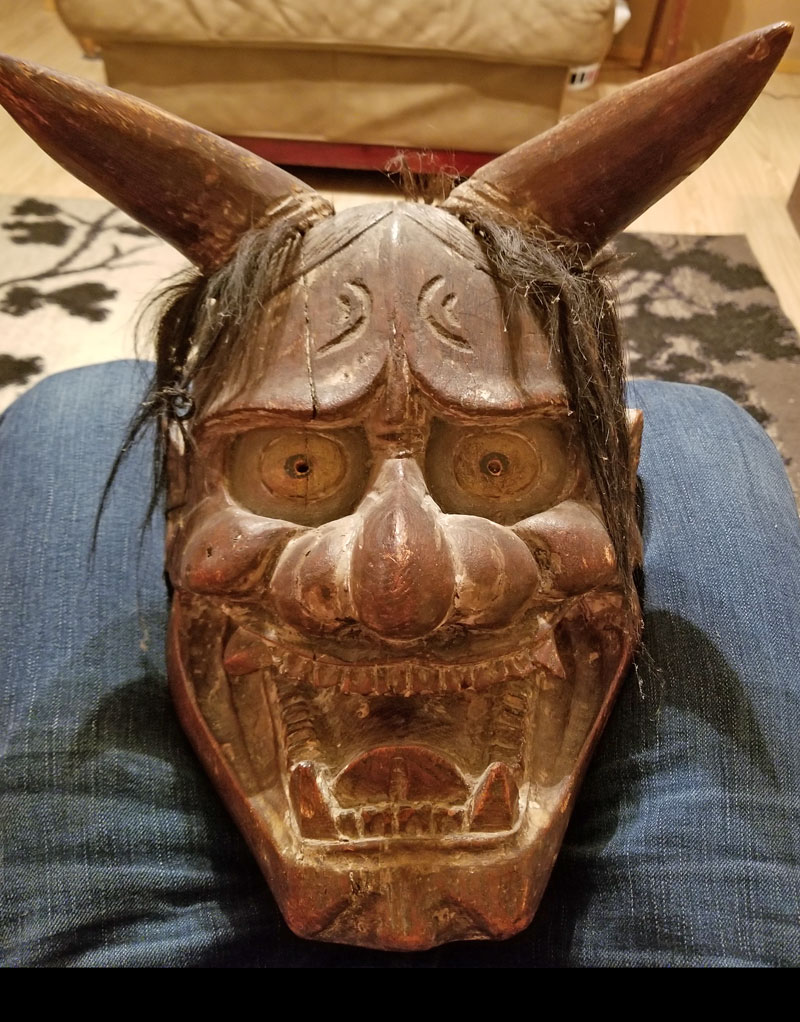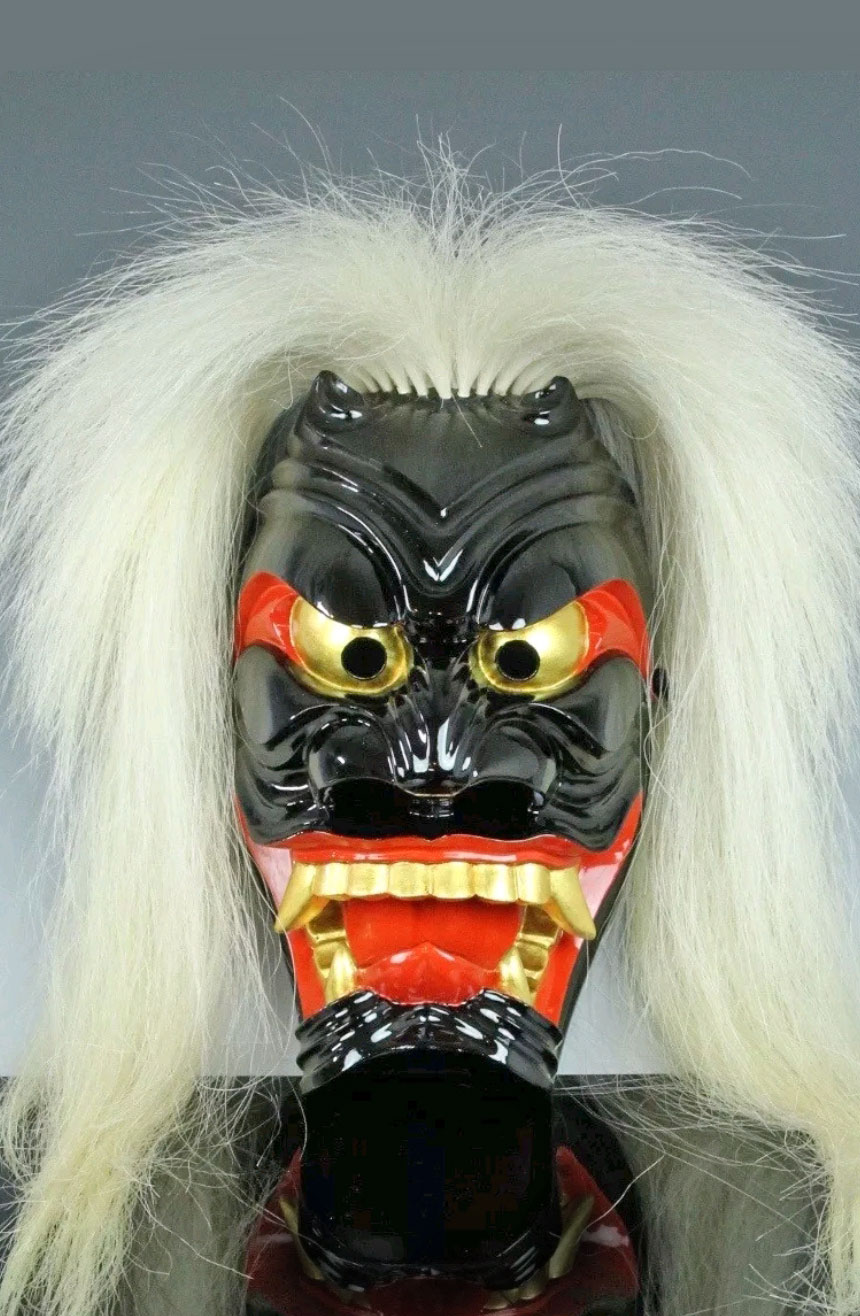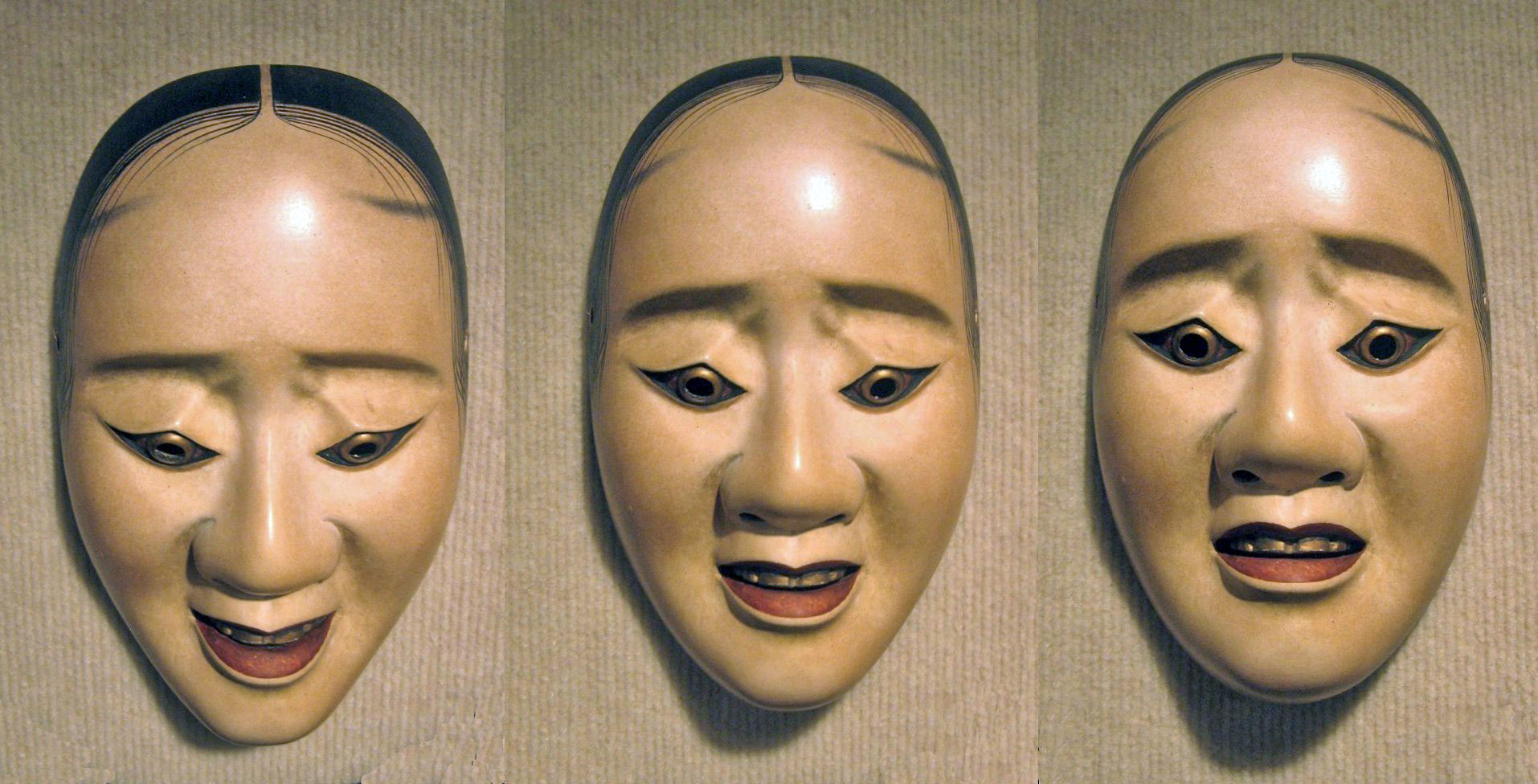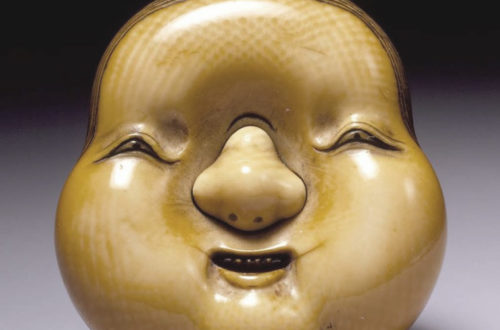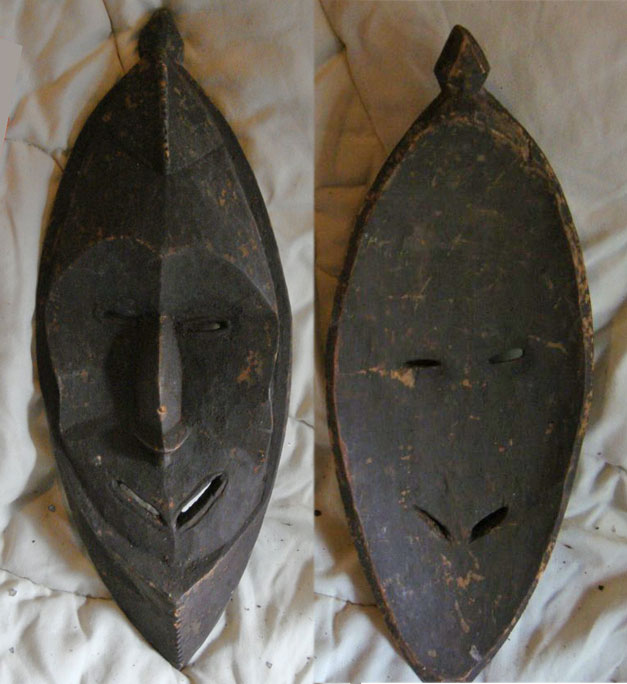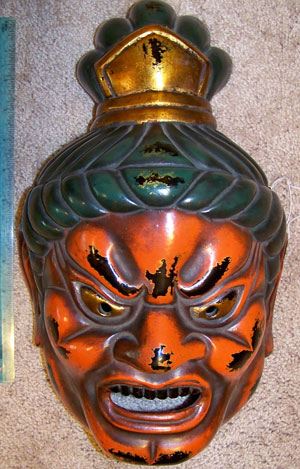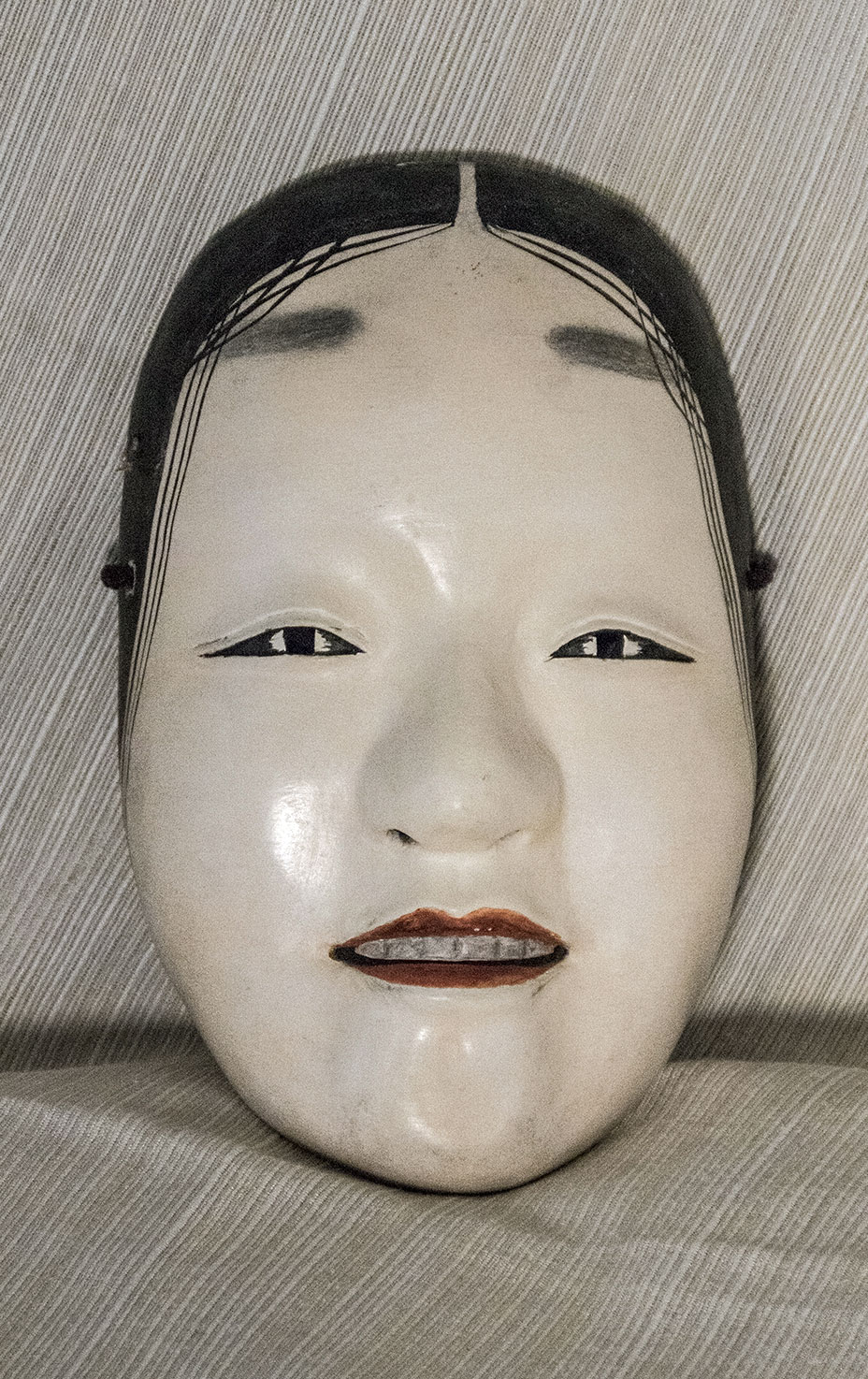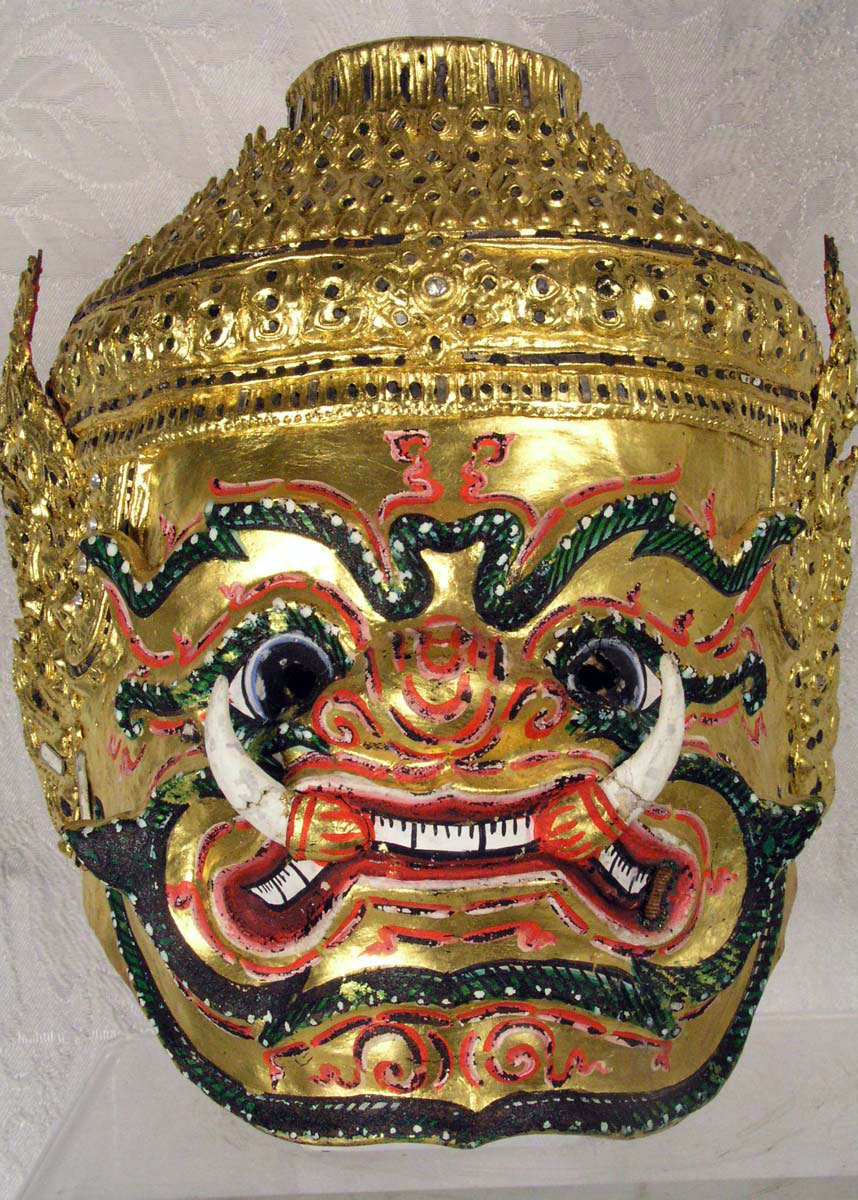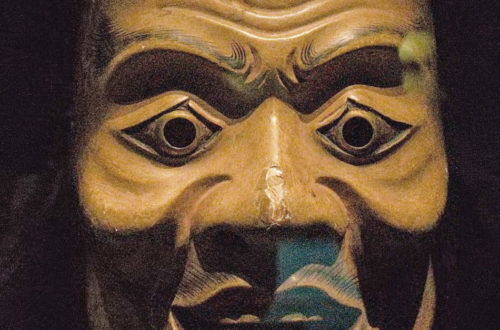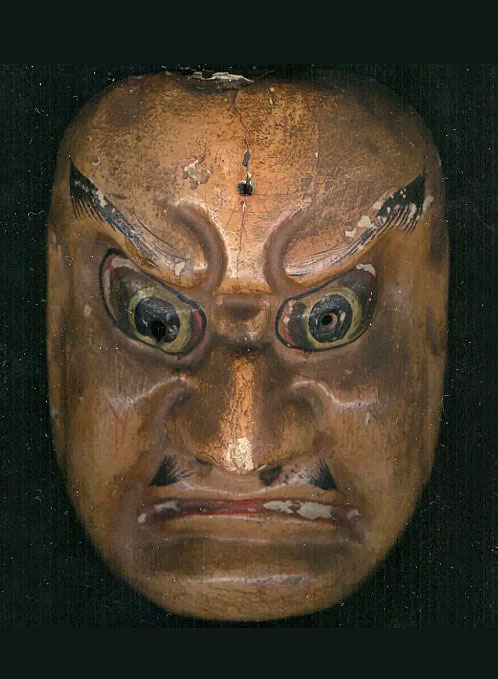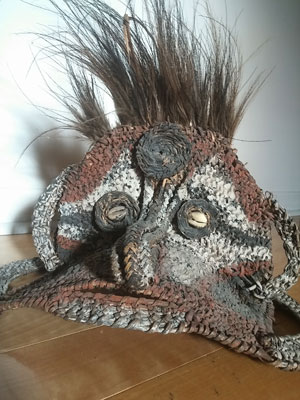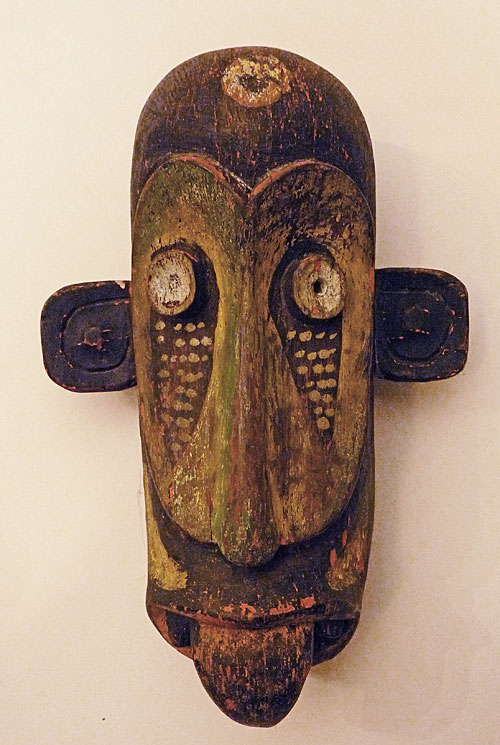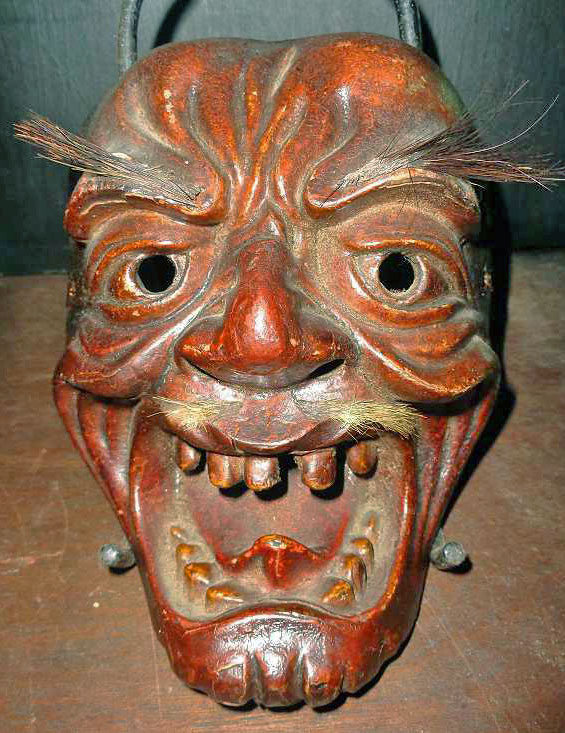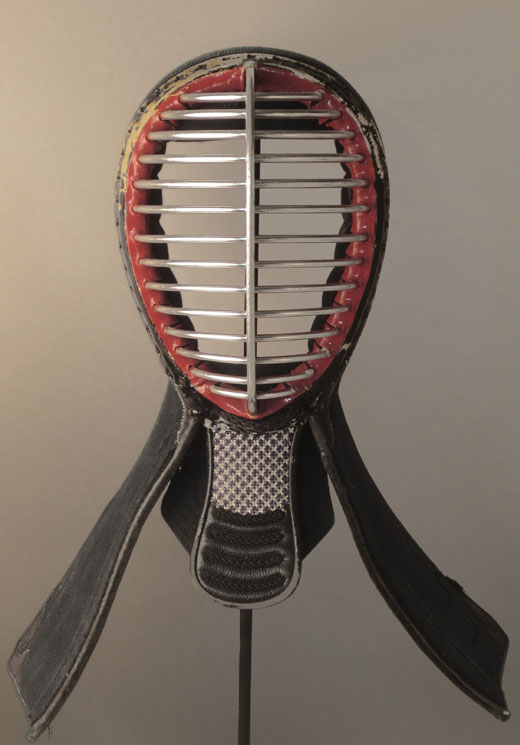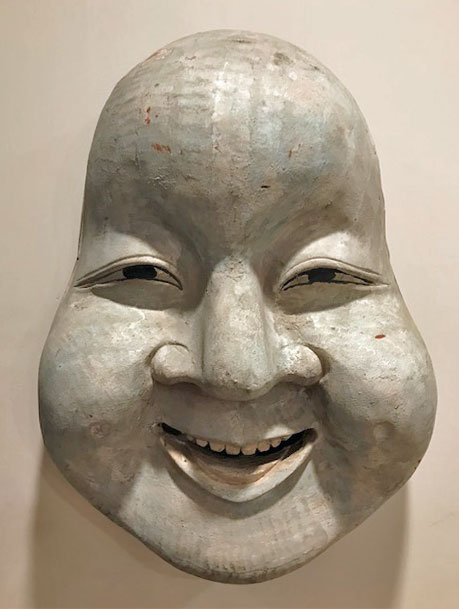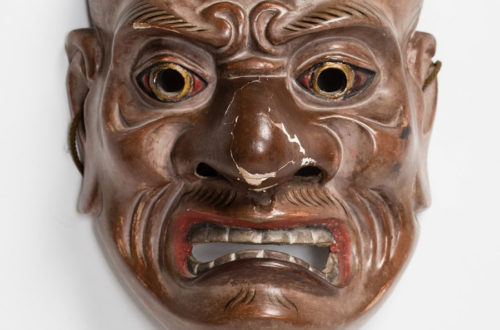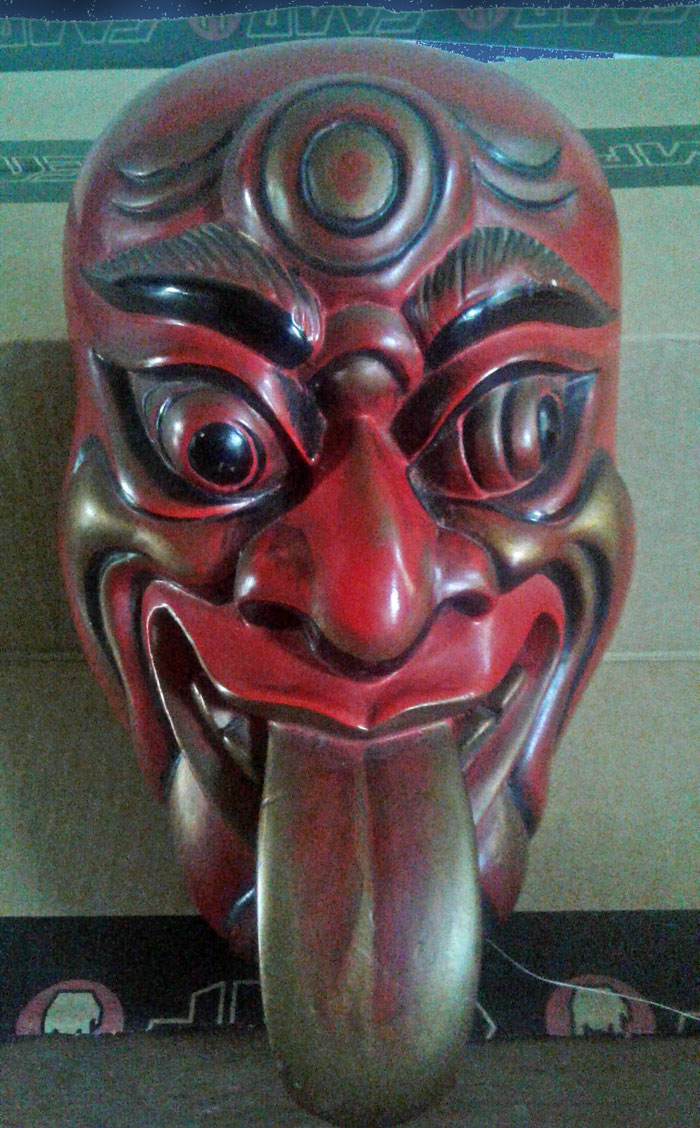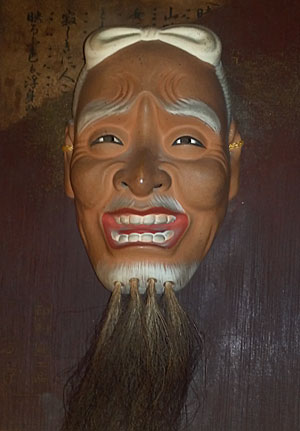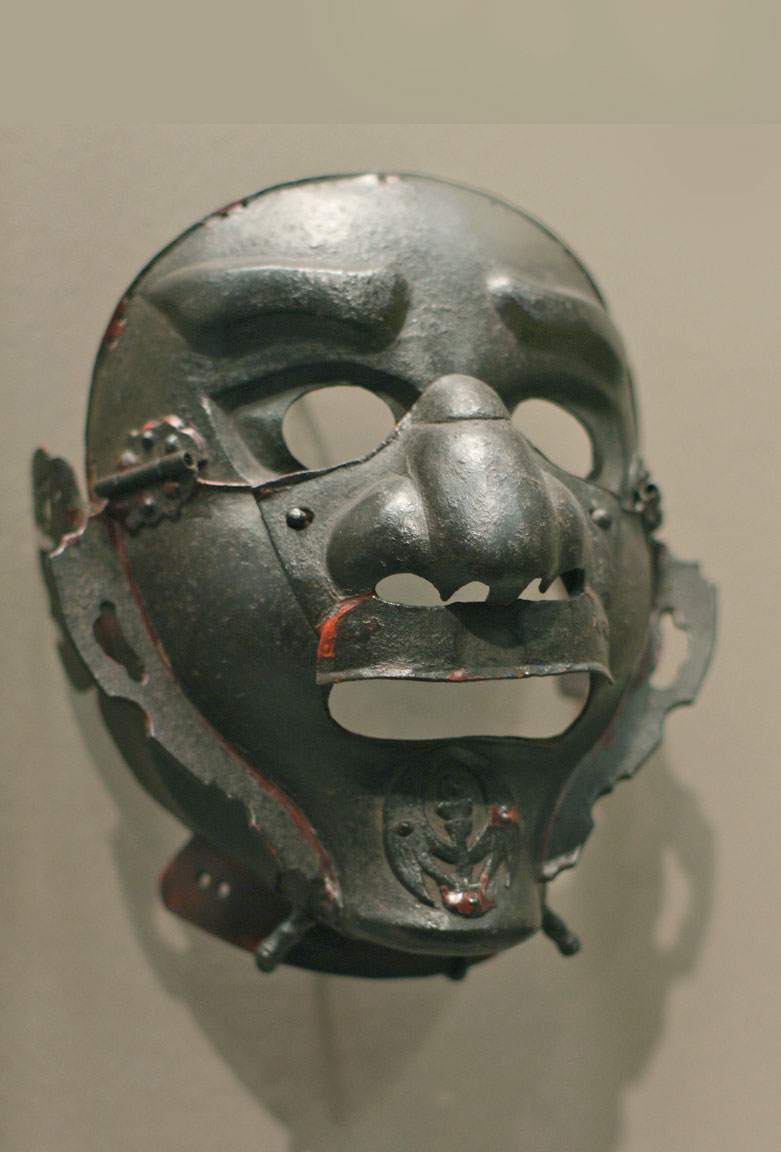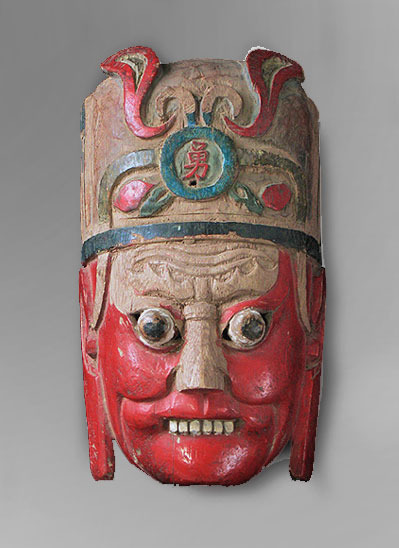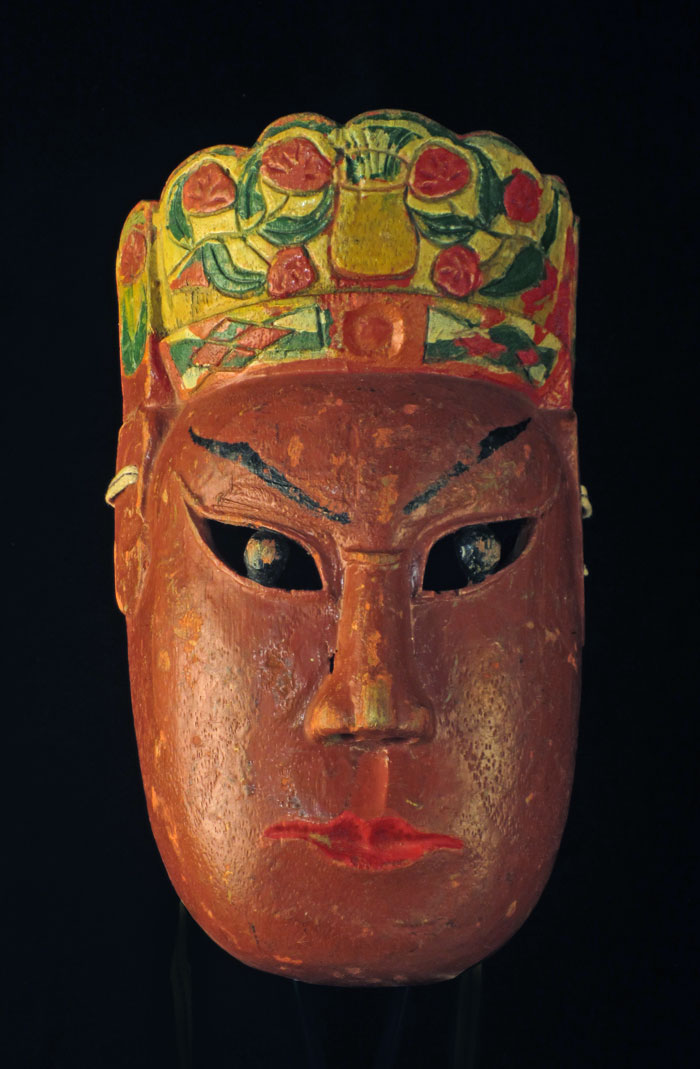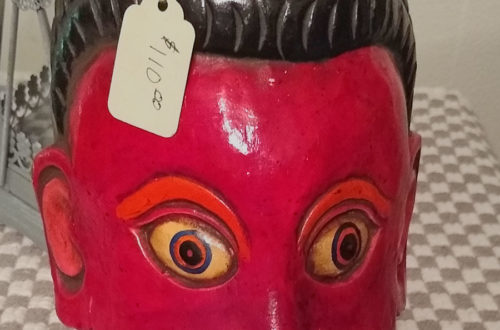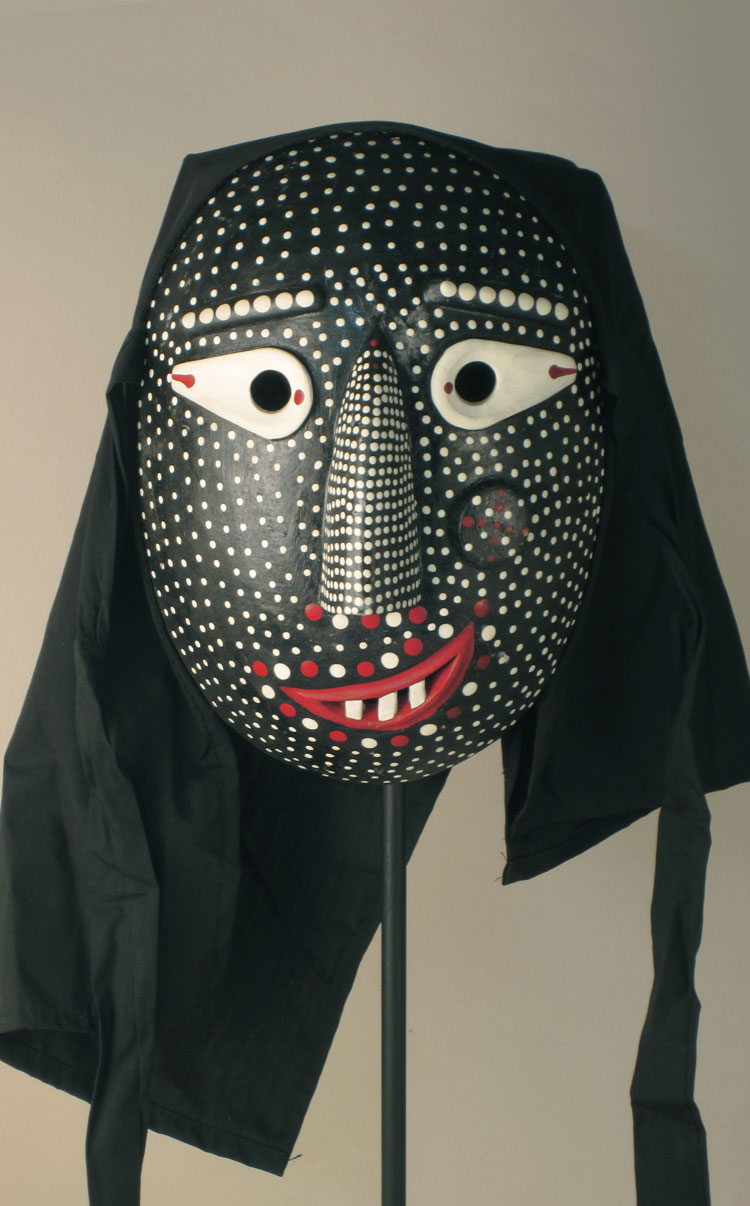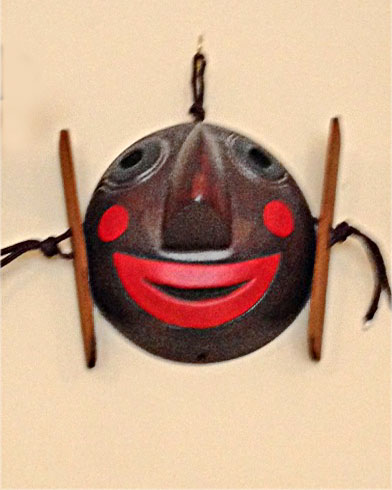The little Goryo Shrine in Kamakura puts on a small but unique festival where the participants wear masks which are over two centuries old. The festival is held in honor of the enshrined spirit of Kamakura Kagemasa, a famed samurai warrior of the 11th Century popularly known as Gongoro. You will love this video on YouTube. Many different kinds of masks are paraded. I think the one here is an old mask called Menkake Gyoretsu. Enjoy.
-
-
Japanese Kyogen mask
Here’s a Japanese carved wood mask that comes from the Asian Ethnographic Collection at the American Museum of Natural History. I especially like it because the design is strong while the colors are weak. Kyogen is the comic interlude between the serious dramas of Noh theater. Kyogen characters are homespun and funny. Japanese people love to display these masks in their homes and give them as gifts. This one is old and belongs in a museum.
-
Popular Japanese mask
Q: I just purchased a gorgeous Noh theater mask of what I assume to be a Hannya character. I was hoping I could get more information, an appraisal, etc. Give me a response and I’ll send you guys some photos. Cameron, 1290 A: I must charge for appraisals, however I usually include a letter grade that suggests value… and it is free. Your brand new Noh mask may not be the famous she devil. I’ve also posted another mask that looks more like her. There are several other characters that resemble Hannya. I couldn’t find one with black skin and white hair in my book. You could do a Google…
-
Noh masks can change expression
Since we have just seen Blake’s Noh maiden, I found this pic on Wikipedia. It shows a mask straight on, slightly tilted, and then tilted more. This is just another example of what makes these masks so extraordinary. The performer (always a man) can change the character’s expression by simple tilting his head. This photo is hi-res so you can enlarge it. There is much more about Noh masks in the Wikipedia story. Bob
-
Woman character in Noh theater
Q: It appears to be a traditional Noh Mask, although I am not sure if its authentic or a reproduction. The glossy back inside of the mask throws me off. Would it be worth appraising? Thanks! Blake, 1282 A: This type of female mask is almost as popular as the she-devil known as Hannya. The craftsmanship that goes into Japanese masks for the theater is arguably the most advanced in the world. The best ones are carefully carved out of wood, then painted and sanded many times. This one is a very careful reproduction made out of a strong, molded material. The Japanese hang these in their homes and give…
-
Old Noh theater mask
Q: I have and old Japanese mask but know nothing about it. Thanks! Oliver, 1262 A: I assume it is an old temple mask– something a monk has made for sale to faithful visitors to the temple. Or it could be an old man for a Noh play. I asked Oliver to send me some higher res scans and will post them when they come. Then I can make a few more comments.
-
Old Man mask of Japanese Noh theater
Q: I have an old wooden Japanese mask and would like it identified and dated. Can you help? I have not found another in my research on Google. Ian, 1257 A: Many of the Noh plays feature one or more old men in the cast. Identifying your particular old man will be difficult. I think it is from the the first half of the 20th century. The quality of the carving suggests it sold for a lower price. Perhaps you can find someone fluent in Japanese to translate that old label. What the label says might raise or lower the value a little. A-
-
Decorative wall hanging
Q: Could you please tell me more about this mask, where it’s from and if it has any value? Ronald, 1228 A: I normally publish real masks on the Mask Man blog, not decorative art. But I thought this might be a copy of a Japanese Bugaku mask. Wrong! Only places like India, Nepal, China and Indonesia do masks with their tongue hanging out. And this is obviously not a real mask, but something nobody could wear. It can only be art for the wall. One of the problems with non-masks is that they often add and subtract features that come from other cultures. This is confusing and something most…
-
Large Japanese wall-hanging
Q: This mask is 17″ tall. I think it’s cypress wood with a gofun finish. Thanks for any info. Gigi, 1214 A: One of my rules is that we post masks that could or have been used in culture, plus good quality reproductions of same. We try to avoid items made for other purposes. I broke the rule because this sculpture is so beautiful and so Japanese. It looks like a male version of Ofuku, but it does not depict a specific character from Kyogen or Noh. Gigi: don’t hesitate to share with our viewers the who, what, when, where and how much you paid for these pieces. Inquiring minds…
-
Nuo mask from Guangxi, China
When we started writing Masks of the World about four years ago, we said on page 50 of the East Asia chapter the following (slightly revised). From the Maonan ethnic group living in the remote Guangxi Province, this is a well-used Nuo character mask. Nuo is an old name for exorcism ceremonies meant to drive off pestilence, disease and death. These ceremonies eventually evolved into dances, and later into operas. The Maonans have always been farmers, but times have been changing rapidly in the People’s Republic. Urbanization seems to be ending much of the folk art traditions. Masks like this one, repainted several times and now exhibiting a nicely worn…
